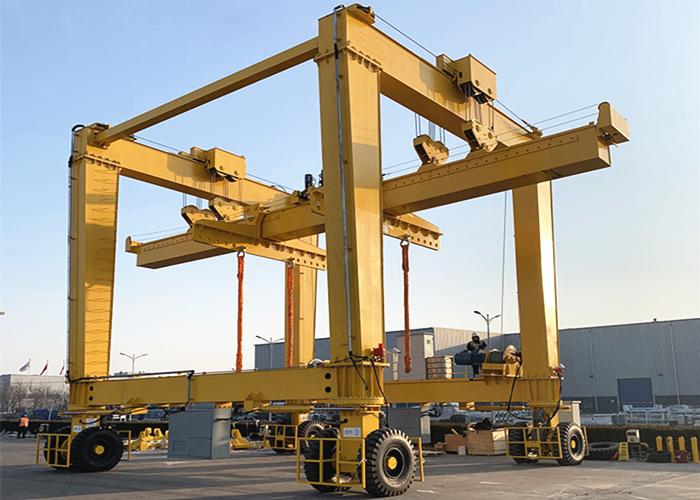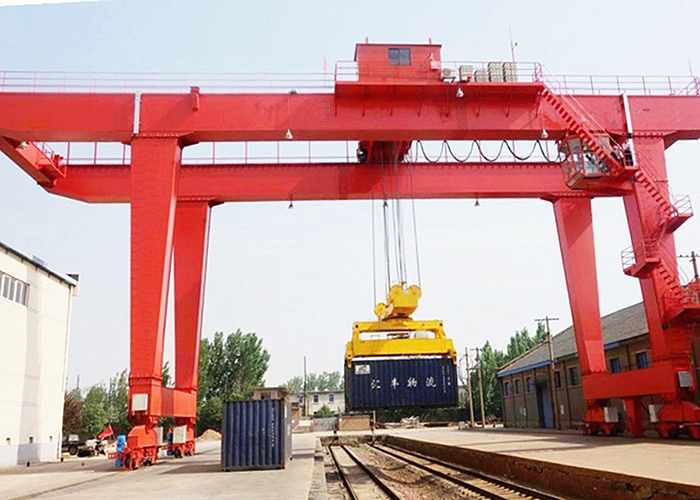In the bustling realm of container terminals and logistics hubs, the rubber tyred gantry (RTG) crane emerges as a pivotal workhorse, orchestrating the seamless movement of containers with finesse. Operating this dynamic machine requires a blend of technical proficiency, situational awareness, and safety consciousness. This comprehensive guide navigates through the intricacies of operating a rubber tyred gantry crane, from pre-shift checks to precision maneuvers, ensuring safe and efficient container handling in bustling logistics environments.

Pre-Shift Checks
Prior to commencing operations, a series of meticulous pre-shift checks are paramount. These checks encompass a thorough examination of the RTG crane’s mechanical, electrical, and hydraulic systems. This includes inspecting tires, brakes, lights, hoisting mechanisms, and all safety features. Any anomalies or malfunctions must be promptly addressed before proceeding.
Familiarization with Controls
Understanding the RTG crane’s controls is fundamental. Operators must be proficient in manipulating joysticks, switches, and touchscreens to execute precise movements. This includes functions such as hoisting, lowering, spreading, trolley movement, and gantry travel. Familiarity with the control panel layout and the purpose of each switch is imperative for seamless operation.
Safety Protocols and Procedures
Safety is paramount when operating an rubber tyred gantry crane. Operators must adhere to strict safety protocols, including wearing appropriate personal protective equipment (PPE) and ensuring that the working area is clear of obstacles and personnel. Additionally, knowledge of emergency procedures, such as emergency stops and evacuation protocols, is crucial.
Starting Up the RTG Crane
Initiating the RTG crane involves a methodical sequence of actions. This includes activating the ignition, engaging the parking brake, and ensuring that all systems are in the ‘ready’ position. Careful attention should be paid to engine indicators and alarms to detect any potential issues.
Hoisting and Lowering Loads
Hoisting and lowering containers demand a delicate touch. The rubber tyred gantry crane is usually a container gantry crane. Operators must carefully position the spreader above the container, ensuring it is securely engaged. The hoisting and lowering functions should be executed with precision, maintaining a controlled pace to prevent sudden jolts or swings.

Spreader Operations
The spreader is a critical component of an RTG crane, responsible for securely gripping and lifting containers. Operators must become adept at manipulating the spreader’s arms, adjusting them to accommodate containers of varying sizes. This requires a keen understanding of load distribution and proper placement.
Trolley Movement
The RTG crane is equipped with a trolley mechanism that allows for lateral movement along the crane’s gantry. The rg crane is usually double beam gantry crane. The double girder contruction provides stability. Operators must skillfully maneuver the trolley to position containers accurately on the stack or on transport vehicles.
Gantry Travel
The ability to traverse along the length of the RTG crane’s track is crucial for accessing different sections of the container yard. Operators must navigate the crane with confidence, making precise movements to align with the desired container handling location.
Communication and Awareness
Effective communication is key to safe and efficient terminal operations. Operators must maintain clear and constant communication with ground personnel, other equipment operators, and control towers. They must also remain vigilant, constantly assessing the surroundings for potential hazards.
Shutting Down and Securing the RTG Crane
Properly shutting down the RTG crane involves a systematic process. This includes engaging the parking brake, powering off the engine, and conducting a final check for any signs of malfunction or damage. The crane should be securely parked in a designated area.
In conclusion, operating a rubber tyred gantry crane demands a combination of technical proficiency, safety consciousness, and situational awareness. By adhering to rigorous pre-shift checks, mastering the control panel, and prioritizing safety protocols, operators can navigate the bustling world of container terminals with confidence and precision. Through continuous training and adherence to best practices, RTG crane operators play a pivotal role in the seamless flow of goods in the global logistics network.